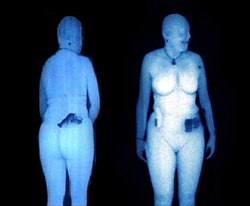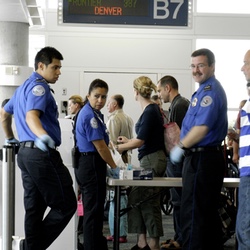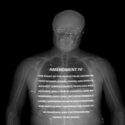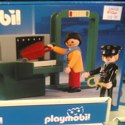
I myself have been through a full body scanner and likely will go through one again in the future. But why?
There are two things we need to examine to determine if the full body scanners that are causing great controversy are the solution we need. First, what is the problem they are trying to solve? Second, is this the right solution to that problem?
I first wrote about full body scanners on the Amateur Traveler blog in a news post in October of 2009. The story read:
A human X-ray machine which produces “naked” images of passengers is being trialled at Manchester Airport. The scanner can spot any hidden weapons or explosives but also shows up breast inserts, false limbs, piercings, and an outline of people’s genitals.
The real drive towards full body scanners came with the infamous underwear bomber last Christmas. Someone slipped onto a plane with explosives in his shorts that, except for a bad triggering device, would have blown up. Explosives don’t show up when you walk through a magnetometer or metal detector so we know that the metal detector is the wrong solution for this particular new problem.
Different solutions have been bandied about:
Strip searches / Body searches / pat downs – Ignoring for a moment that people don’t like to be patted down, a pat down is probably better to find a knife or a gun after you set off the metal detector than it is to find something that might blow up. Pat downs might have found the underwear bomber but would not have worked to find the attack before that where the bomb was a liquid nor the one last week where the bomb was a powder placed in laser printer cartridges. Bombs can come in all sorts of forms. Could you spot one? Neither can the TSA screener visually.
Full Body Scanners – When we first saw the pictures of full body scanners you will note that the manufacturer show pictures of people carrying hidden guns. See the photo above? That is what the full body scanner is good at finding. It is a virtual strip search so it is good at finding what a strip search will find. Can it detect a bomb? Maybe. If it looks like a bomb.
Bomb sniffing dogs – If we are looking for bombs then dogs are a real solution. We know that they are good at actually finding bombs. Explosive devices leave residue that you and I cannot smell but a dog can. Now getting enough bomb sniffing dogs and trainers might be difficult or prohibitively expensive since a dog has to have time off to clear its super sniffer, but at least this is a solution that is appropriate.
Profiling – People point to Israel’s security system as effective and to their use of physiological profiling as a good tool for screening. It is a good tool and does have some advantages that no matter what the weapon might be (gun, bomb, box cutters) profiling can help spot the bad guys. But profiling is not particularly better at finding bombs so this is something that should be looked at in parallel with other solutions.
Gas Chromatographs – When the TSA thinks you have something that looks suspicious that they think could be a bomb what they do is swab the object and then put that swab in a gas chromatograph. The gas chromatograph is an appropriate tool for detecting chemical residue. It works better than a dog’s nose and does not get tired. We could swab everything and everybody and that would be a viable tool to find explosives, but it might take longer than desired.
Chemical Detector Booths – Another approach to chemical detection provided by a gas chromatograph without the swabbing has been deployed in some airports. You go into a glass booth and it blows in a puff of air. This air then goes through a gas chromatograph and the booth either gets a green light which says it did not find suspicious chemicals or it flashes red (or locks). This solution is not only less invasive than a full body scanner, but actually addresses the right issue. It looks for bombs. Why aren’t we rolling these out instead?
- Search for Great Tours HERE
- Buy Travel Insurance
- Book Your Accommodation HERE
- Get a Car Rental
+Chris Christensen | @chris2x | facebook
8 Responses to “Are Full Body Scanners the Right Solution?”
Leave a Reply
Tags: air travel, article, tsa

 The Definitive Guide to Airport Security and the TSA
The Definitive Guide to Airport Security and the TSA 7 Unusual Things to Pack For Better Travel
7 Unusual Things to Pack For Better Travel Speed Through Security in the Airport
Speed Through Security in the Airport 10 Tips to Combat Jet Lag
10 Tips to Combat Jet Lag

chris2x
Says:November 23rd, 2010 at 8:29 pm
Pauline Frommer mentioned that the puffer machines had not worked out well so I looked into it further and found that:
“TSA continues to work with the manufacturer on improving maintenance elements of first-generation units,”
http://seattletimes.nwsource.com/html/nationworld/2003744097_puff12.html
libhomo
Says:November 24th, 2010 at 3:52 am
The central fact in this debate is that the XRays used with the body scanners are carcinogenic.
Herne
Says:November 24th, 2010 at 9:27 am
The security measures are reactionary and mostly theatre to make it appear that something is being done to address the security issues. The only people winning in the case of these new measures are the people who make the expensive body-scan machines and those who’s goal it is to degrade the civil rights of the people who are flying. I’m all for x-raying baggage and metal detectors, but I draw the line at questionable health risks from radiation and invasive pat-downs. The explosive-sniffing technology would’ve been the smart way to go, but apparently someone involved with the TSA is also involved in the manufacturing of the scanning machines, so you know what’s going on there.
I, for one, will not travel to the USA again until these measures are better resolved and my rights are better protected.
chris2x
Says:November 24th, 2010 at 12:26 pm
another interesting post: PETN: The explosive that airport security is targeting – http://www.latimes.com/news/nationworld/nation/la-na-petn-20101124,0,3675872.story
Melvin
Says:November 26th, 2010 at 4:45 am
Interesting post…
I would recommend to have a long line and add all your examples behind each other! lol
An easier suggestion would be, just behave nicely that people are not interested to bomb you away? Ok, seems not to work for some countries, but for others! So a change might not be so easy, but the solution. 🙂
Josh Allen
Says:November 26th, 2010 at 8:55 am
I don’t think the full body scanners and pat downs are that big of a deal (this is coming from a pilot) However I would feel much more comfortable if the people who were conducting the pat downs and watching the scanners were better trained and had more of a “want” to do the job well, then viewing it as just a job. For instance in Israel the scanners/security guards etc… are mostly ex-military folks (Don’t quote me on this) They have however; more of a passion and interest in keeping everyone safe mainly because they have witnessed attacks first hand. Thats not to say every TSA agent doesn’t have an interest in it, but its more of a job to them I feel then anything else.
Perhaps I’m way off on my view on this but I would just feel more comfortable knowing these TSA folks knew what they were doing instead of them being there to show the public that the Govn’t is doing something.
Sorry if that came off political, that wasn’t my intent honestly!
Brian Carter
Says:December 7th, 2010 at 11:41 am
I love the argument behind the post and the need to avoid unnecessary infringement of civil liberties. These machines violate the 4th amendment not because they can find bombs (and, as a traveler you certainly can be forced to submit to a search in the name of doing so), but because they use security as a pretext to bust people traveling with some harmless weed in a baggy in their crotch. They’re busting people left and right for minor drug offenses with these things! The analogy of a search warrant for a home shows how ridiculous this is. Warrants must be issued for something specifc, such as illegal guns for example, and something unrelated uncovered during the search would not be covered by that warrant.
Unfortunately, though, the air puff booths seems to be a non-viable technology. Chris, even the article you cite (which is from 2007!) pretty much concludes the technology is “DOA” and didn’t perform in the real world. I don’t believe any booths have been installed in 4 years.
chris2x
Says:December 7th, 2010 at 12:36 pm
Yes, Brian, you are right about the air puff technology, see the comments above.